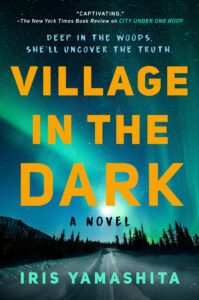As writers, we often focus on plot and characters, but setting can play an important function in your story as well. It certainly did in mine. City Under One Roof is set in a remote town in Alaska, inspired by a real place where most of the two hundred and some residents live in a single high-rise building and the only land route is via a narrow tunnel cut through a mountain. It seemed like an ideal setting for a mystery/thriller. Here are some ideas on how to make your setting work for you.
Start with Some Research
It’s always a good idea to start with research whether your town is real or fictional but inspired by a real town. Research has always proven to be fruitful for me both as a springboard to storylines and adding color to the world. For instance, for my fictional city, I had dug up some fascinating information on the real town, which was originally formed as a military base. I used this history and mixed in a few fictional tidbits. I also discovered that there used to be underground tunnels beneath the city that no longer exist today but could certainly still exist in my fictional one.
Fictionalize
As implied above, I did not have a problem with fictionalizing certain elements to enhance the story. We are fiction writers, after all. However, I tried to maintain an element of believability based on the research. Those fictional tunnels did once exist, so it’s not completely out of the realm for there to be tunnels under the city today, and that became a major element of my story. In the real town, most, but not all of the residents live in the high-rise building, but in my fictional world, everyone does. That ultimately made the story more interesting.
Incorporate the Setting in Your Plot
How can you utilize the setting in your plot? Perhaps help is far away, raising the stakes for your protagonist. Are there swamps, cliffs, bogs where bodies can be dumped? Is it an urban city where people can easily disappear into a crowd? Is there wilderness where nature and the elements can play a part? Escape routes such as sewers, vents or secret passageways can always be fun. There are endless ways to incorporate your setting as a crucial part of your story.
Use Your Setting to Develop Characters
The most important element about your setting is who lives there, of course. Whether it’s an isolated wilderness, a multi-million-dollar mansion or a small southern town, there are certain types of people who would probably inhabit the space you’ve created. Part of what makes the Fargo movie and series work are the unique characters and their Minnesota accents. Since I fictionalized my town, I could imagine the stories of the characters who would choose to live in such an isolated place and why. Your town might be a place you’ve lived in or are familiar with and populated by characters you know, but they should make sense in the setting you’ve created.
Bring in the Outsider
It’s always a good way into the story to have an outsider enter the world—someone who acts as the reader’s eyes and ears to learn who the characters are and what the rules are. In mysteries, that is often the sleuth or detective solving the case. In City Under One Roof, Detective Cara Kennedy is the outsider who finds herself trapped after an avalanche blocks the only land route in or out of the city.
I love being transported in books to unique places, and as a writer, I have found that the right setting can go a long way to enhance your story if you can utilize it.
How about you? What are your setting secrets? Let’s talk about it on the Career Authors Facebook page!

Iris Yamashita is an Academy Award–nominated screenwriter for the movie Letters from Iwo Jima. She has been working in Hollywood for fifteen years developing  material for both film and streaming, has taught screenwriting at UCLA, and is an advocate of women and diversity in the entertainment industry. She has also been a judge and mentor for various film and writing programs, and lives in California.
material for both film and streaming, has taught screenwriting at UCLA, and is an advocate of women and diversity in the entertainment industry. She has also been a judge and mentor for various film and writing programs, and lives in California.





